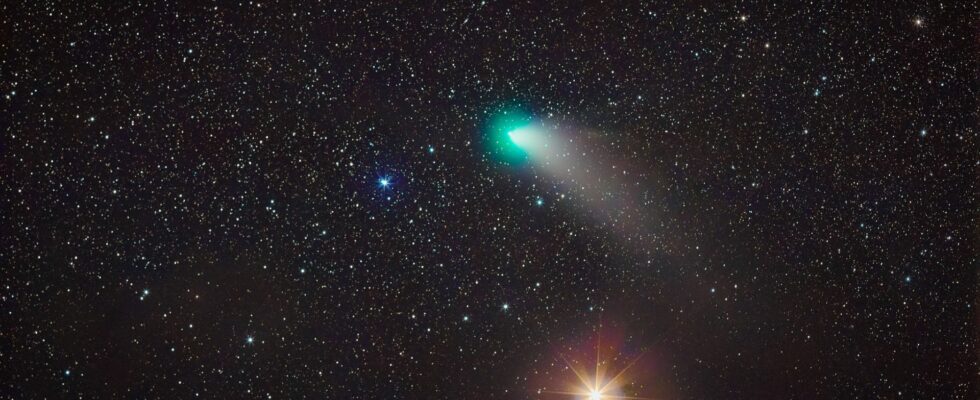A promising comet has been discovered by astronomers. C/2023 A3 (Tsuchinshan-ATLAS) could be observed in October 2024. Its brightness would rival that of very bright stars.
It is now too late to hope to see comet C/2022 E3 (ZTF) with the naked eye in France. This beautiful and green comet will never come to see us again. However, other comets may surprise us with a similar visit in the future. One of them is already promising for the year 2024, as spotted by ScienceAlert on March 7, 2023.
This comet, named C/2023 A3 (Tsuchinshan-ATLAS), was discovered as recently as February 22, 2023. Further research showed that the object was hiding in observations on December 12, 2022, from the Zwicky Transient Facility (ZTF ), a survey of the sky using a camera from the Palomar observatory (California). Initially, the object had been baptized A10SVYR, then its cometary nature was confirmed February 24. The following animation gives an idea of its trajectory.
The comet will be close to Earth in the fall of 2024
This comet is approaching the Sun and our planet. As it approaches our vicinity, it could shine brightly in the night sky, with much more intensity than some stars. Its brightness could be at its maximum in October 2024. The perihelion of C/2023 A3 (Tsuchinshan-ATLAS), that is to say the moment when it will be at its closest point to the Sun, is scheduled for 28 September 2024. A few weeks later, on October 13, it should be closest to Earth.
There magnitude is used to describe the apparent brightness of a star in the sky. The brighter the object, the lower its magnitude. The limiting magnitude of the naked eye is 6. That of the full Moon is -12.6.
It is still early to say that the comet will be particularly bright, because this type of object is unpredictable. It is complex to predict how a comet will react as it approaches the Sun (for example, a comet may disintegrate). However, current estimates predict a magnitude of 0.7 at the time of perihelion of C/2023 A3 (Tsuchinshan-ATLAS), ScienceAlert points out. For comparison, Antares (the brightest star in the constellation Scorpius) has an estimated magnitude of 1.06.
We can therefore reasonably hope that the comet is bright. Its magnitude could even reach -0.2 when the comet approaches Earth. For now, C/2023 A3 (Tsuchinshan-ATLAS) is still a long way off: it is evolving at a billion km from U.S. We will have to wait to find out whether or not it will be the comet of autumn 2024.
If you liked this article, you will like the following ones: do not miss them by subscribing to Numerama on Google News.
